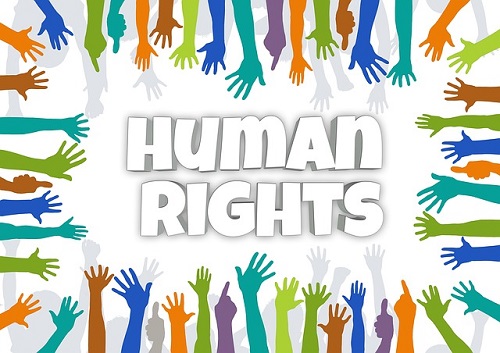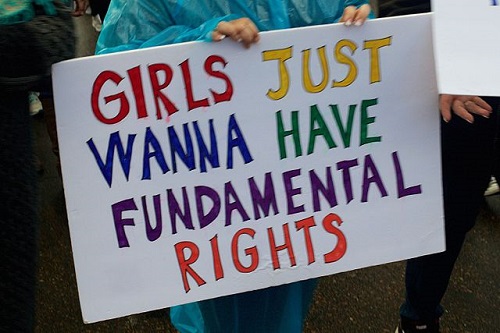Difference Between Human Rights and Fundamental Rights
Human rights and fundamental rights are key principles that stand at the basis of any just and equal society. Although the two terms are often interchanged, there are key differences that cannot be overlooked. In fact, while fundamental rights are outlined and protected by the national constitution of any given state – and thus slightly vary from country to country – human rights are universal and inalienable principles guaranteed at an international level and enforced by the United Nations and other international agencies. In other words, fundamental rights are granted by individual governments and are awarded by national constitutions while human rights apply to each and every individual, regardless of their nationality, ethnicity and religion.
What are Human Rights?
The United Nations – the primary body responsible of the protection and enforcement of universal human rights – defines human rights as “rights inherent to all human beings, regardless of race, sex, nationality, ethnicity, language, religion, or any other status.” Human rights apply to all individuals – without discrimination – and include, inter alia, the rights to life and liberty, freedom of opinion and expression, freedom from torture and slavery, and right to work and education.
Fundamental human rights are outlined in the 1948 Universal Declaration of Human Rights – a milestone document, which was translated into more than 501 languages – thus becoming the most translated document in the world. The UDHR is integrated with two other key documents, which entered into force in 1976: the International Covenant on Civil and Political Rights (and its two optional protocols) and the International Covenant on Economic, Social and Cultural Rights (and its optional protocol). The first text focuses on:
- Freedom of opinion and expression;
- Right to fair trial:
- Freedom of thought:
- Prohibition of torture and other cruel and inhuman treatments;
- Prohibition of arbitrary killing; and
- Prohibition of slavery and forced labor.
Conversely, the Covenant on Economic, Social and Cultural Rights focuses, inter alia, on the right to education, the right to work in “just and favorable conditions,” the right to an adequate standard of living and the right to social protection.
The Universal Declaration of Human Rights and the two Covenants form the International Bill of Human Rights.
What are Fundamental Rights?
While human rights are universal and internationally recognized, fundamental rights are awarded by the country’s constitution and only apply to those individual that fall under the constitution’s jurisdiction. Although in many cases fundamental rights and human rights overlap, the first are country specific and are enforceable by national legislative bodies (i.e. the U.S. Supreme Court). Fundamental rights are widely accepted and enshrined within any given society and any individual can go to court if he/she feels that his/her fundamental rights are not being respected. Most fundamental rights mirror basic and universal human rights, including:
- Right to freedom;
- Right to freedom of religion;
- Education and cultural rights;
- Right to work; and
- Right to freedom from exploitation.
Similarities between Human Rights and Fundamental Rights
Although legally different, human rights and fundamental rights have various aspects in common. In fact, both aim at creating a legal framework in which individual and societies can live in peace and in the respect of everyone’s equality and diversity. Some of the main similarities between the two categories of rights are listed below:
- Both fundamental and human rights aim at protecting individuals and at creating harmonious and just societies;
- Both aim at providing individuals with the means to live in a dignified way and to realize their full potential;
- Both fundamental and human rights can be enforced by legal mechanisms and bodies – although universal human rights can only be enforced by international bodies (i.e. International Court of Justice, International Criminal Court, etc.);
- Both originate from the idea of a civilized, just and equal society; and
- Both are an intrinsic and fundamental part of our life as individuals and as members of society.
What is the Difference between Human Rights and Fundamental Rights?
While human rights and fundamental rights often overlap, there are some key differences – in particular concerning their legal nature and their enforceability. In fact, human rights are basic and universal rights that should be enjoyed by all individuals regardless of nationality, race, ethnicity and sex, whereas fundamental rights are enjoyed by all members that fall under the jurisdiction of the constitution of a given country, without presumption or cost of privilege. Some of the main differences between the two categories of rights are listed below:
- Human rights are outlined in the International Bill of Human Rights and in a series of international conventions and protocols that define the limits and jurisdiction of international law (i.e. Convention on the Prevention and Punishment of the Crime of Genocide, International Convention on the Elimination of All Forms of Racial Discrimination, Convention on the Rights of Persons with Disabilities, Convention Against the Use of Torture and Other Cruel and Inhuman Treatments, etc.). Conversely, fundamental rights are outlined in every country’s national constitution – as such, they can vary from country to country;
- Governments are expected to enforce human rights treaties only if they have ratified the relevant conventions – otherwise, international organizations (i.e. the United Nations, the Human Rights Council and other relevant mechanisms) can only recommend the governments to ratify such conventions and treaties but cannot take direct action to verify the implementation of the various provisions. Conversely, governments and national legal mechanisms have the duty to respect the fundamental rights outlined in their national Constitution;
- Fundamental rights are country specific and are built on the principles of individual freedom and self-determination, conversely, human rights are internationally recognized and are built on the idea of civilized societies and on the right to a dignified life.
In general, the implementation and enforcement of international human rights is more problematic than the enforcement of fundamental rights due to the very nature of the international legal framework. Although human rights have a universal nature, the jurisdiction of the various covenants and treaties only applies within the countries that have ratified the relevant conventions and treaties. Furthermore, some international remedies can only be sought once all domestic remedies are exhausted.
Human Rights vs Fundamental Rights
Building on the differences outlined in the previous section, we can identify other factors that differentiate fundamental rights from human rights.
| Fundamental rights | Human rights | |
| Role of the government | The central government and all its bodies and mechanisms are legally obliged to enforce the national constitution and to ensure that all citizens enjoy the same rights and live a dignified life. | Once the government has ratified the relevant human rights conventions, it is often required to integrate the national constitution with the new provisions (if any) found in the international treaties. Many international covenants and conventions require governments to harmonize national laws with international standards. |
| Justice and accountability | If a citizen (or any individual under the jurisdiction of the constitution of a given country) believes that his/her fundamental rights are not being respected, he/she can go to court and seek justice using all available national legal mechanisms. | If any individual believes that his/her human rights are not respected can seek justice using national mechanisms. If national legal mechanisms fail to provide justice, the individual can seek accountability by appealing to international legal bodies (i.e. ICC, ICJ, etc.) |
| Jurisdiction | Fundamental rights are awarded to every individual that falls under the jurisdiction of the national constitution of a given country – this includes tourists, migrants, and other categories of persons (although there might be differences depending on the legal status of the person). | Human rights apply to all human beings, regardless of their sex, nationality, ethnicity, race and legal status. Yet, a country’s government can only be held accountable for human rights violations if it has ratified the relevant international treaties and conventions. In some exceptional cases, the international community can set up commission of inquiries or special tribunals to investigate into gross violations, war crimes and crimes against humanity. |
Conclusion of the difference between Human Rights and Fundamental Rights
Human rights and fundamental rights are key principles that ensure that all individuals live a free and dignified life. Both categories of rights aim at creating a harmonious social environment and at protecting humans from violence, injustice and discrimination. Human rights are universally recognized moral principles promoted and enforced by international organizations (in particular the United Nations and its relevant human rights bodies). Conversely, fundamental rights are found in the national constitution of every country and are, therefore, country specific.
The aim of the international community is to harmonize national legislations with internationally accepted standards and norms outlined in treaties, covenants and conventions. As such, whenever a country ratifies a human rights treaty, it is encouraged to take the necessary steps to ensure that national laws are in line with international provisions. Such process aims at ensuring better accountability and at promoting just and fair societies.
- Difference Between Michelle Obama and Melania - January 29, 2019
- Difference Between Trump and Modi - December 4, 2018
- Difference Between Carbon Tax And Cap And Trade - December 4, 2018
Search DifferenceBetween.net :
1 Comment
Leave a Response
References :
[0]Assembly, UN General. "Universal declaration of human rights." UN General Assembly (1948).
[1]Assembly, UN General. "Universal declaration of human rights." UN General Assembly (1948).
[2]Clayton, Richard, Hugh Tomlinson, and Carol George. The law of human rights. Vol. 2. Oxford University Press, USA, 2000.
[3]Cranston, Maurice William. "What are human rights?." (1973).
[4]Meron, Theodor. Human rights and humanitarian norms as customary law. Oxford: Clarendon Press, 1989.
[5]Pollock, Stewart G. "State constitutions as separate sources of fundamental rights." Rutgers L. Rev. 35 (1982): 707.
[6]"Image Credit: https://pixabay.com/en/right-human-rights-human-hands-597133/"
[7]"Image Credit: https://commons.wikimedia.org/wiki/File:Women%27s_March_2017_(32297887642).jpg"



Very nice information